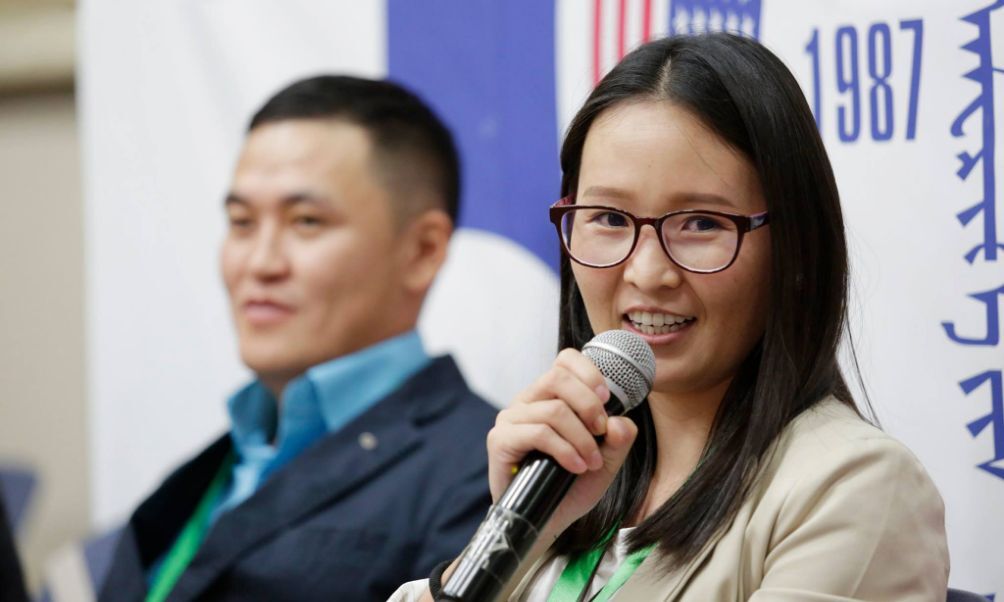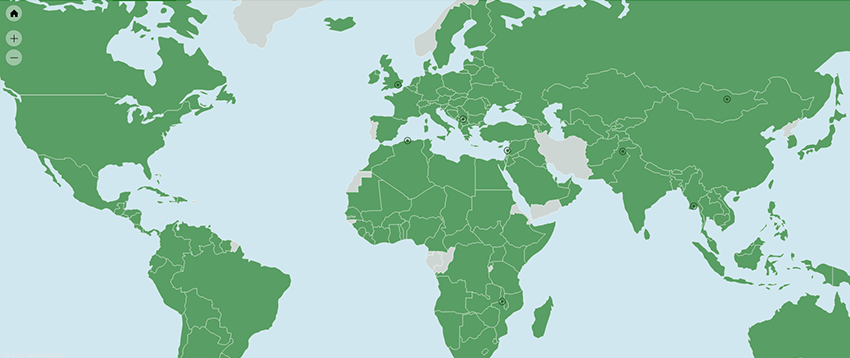-
What We Do
- WHERE WE WORK
-
About Us
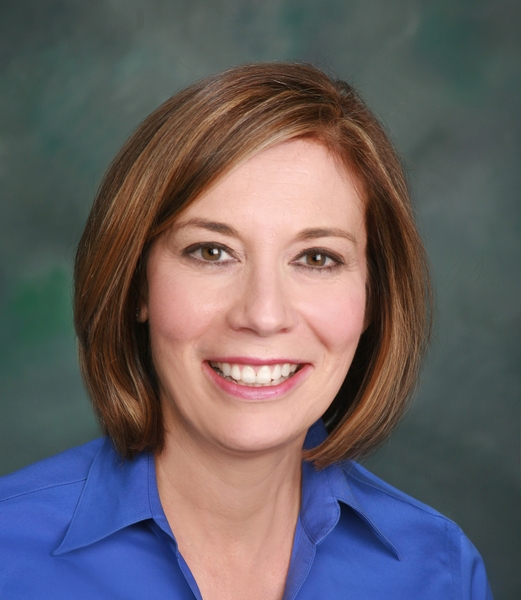 Welcome Message from Carol Jenkins
Welcome Message from Carol JenkinsWorld Learning believes that the best hope for peace, justice, and sustainability lies in bringing people together. Through cultural immersion, experiential learning, and information sharing, our programs equip others to collaboratively address the most pressing issues of our time.
Throughout my years at World Learning, I have had the fortunate opportunity to meet with many of our participants, partners, and alumni—a global network of learners. Our programs help them understand other cultures, master new skills, and cultivate networks. Our teaching and training methodologies empower them to find locally relevant, sustainable, and implementable solutions. Our approaches emphasize flexibility and adaptability that help them tackle real-world problems.
They, in turn, make extraordinary changes in their lives and communities.
Please join us—and those we work with and serve around the world—in our pursuit to create a brighter and better future for all.
- Get Involved
Media Center > Story
Q&A: World Learning’s Deepa Srikantaiah on How to Create Disability-Inclusive Classrooms
September 26, 2019
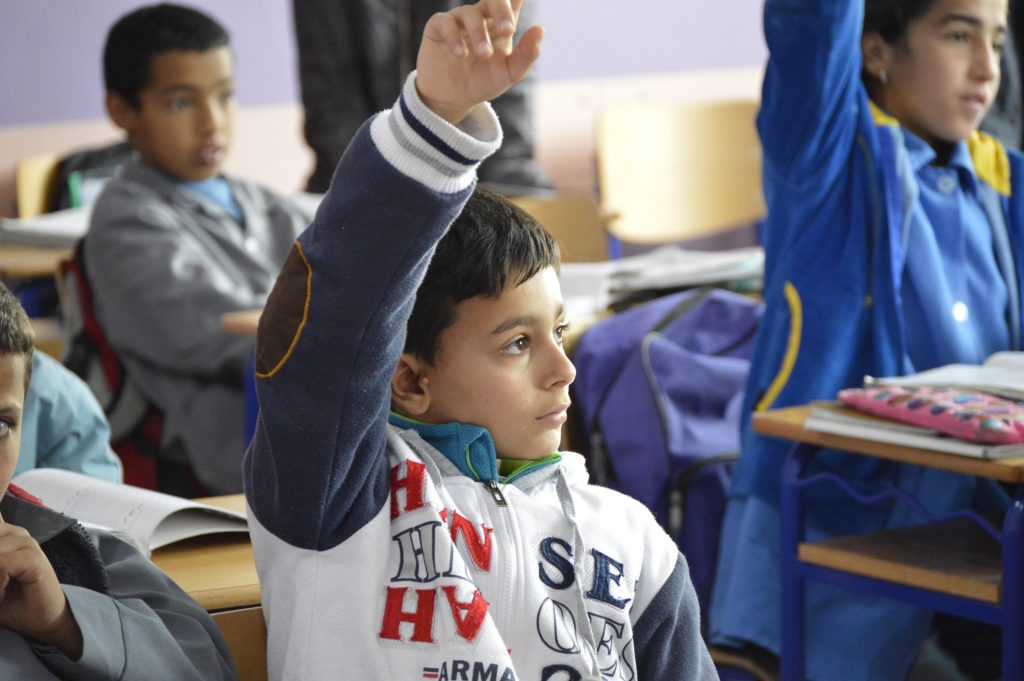
Everyone has their own way of learning. Some students learn better through lectures, while others need visual cues. Some can best solve math problems with a pencil and paper, while others use manipulatives like blocks or coins. Some students are blind and need books in Braille, while others are deaf and learn better with instruction in sign language.
World Learning has long worked to ensure all children have access to a high-quality education — including children with disabilities. This year, we are deepening our commitment to disability-inclusive education by integrating the University Design for Learning (UDL), a framework that regards all students as different kinds of learners, into our global education programming.
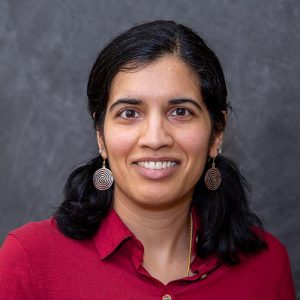
World Learning Senior Education and Research Specialist Deepa Srikantaiah.
But what exactly will that mean for our programs in Lebanon, Pakistan, and beyond? In the following interview, World Learning Senior Education and Research Specialist Deepa Srikantaiah explains how the UDL model works and shares how World Learning will use it to create flexible learning environments that accommodate the learning differences of all children.
To begin, how have educational systems failed learners with disabilities?
I think the biggest problem is providing access to school. Families themselves tend to protect their children with disabilities. If they send their children to school they may question: will they be accepted, will they not fall behind, will they be kicked out, will they drop out? If a student is blind, for example, are there resources and support available for the student to learn reading in Braille? In a lot of communities, parents are not given that information or that security.
We’re trying to expand the way that we think about people.
Within the classroom there is also not enough support or resources for teachers to instruct all students. So if a child with a disability goes to school, teachers might be hesitant to teach them. Or a child can have a learning disability, which is often not transparent to the teacher and therefore goes undiagnosed. I’ve seen teachers in many countries say that students look like they are not pay attention in class are “slow learners” or “not smart enough” to keep up with the rest of the class.
Why is inclusion important to World Learning?
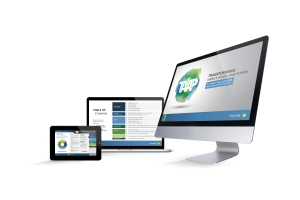
We believe in social inclusion. We’ve created the TAAP Toolkit (Transforming Agency, Access, and Power), where we’re working with communities around the world to make sure they are much more inclusive and providing a framework for development practitioners to ensure their work amplifies the voices and advances the rights of all people. So I think in practice we are already working toward a very inclusive environment through our work as well in our office.
It’s just the nature of World Learning. We started out doing international exchanges like The Experiment in International Living. Those exchanges are all about getting out of your comfort zone, going to a different country, and learning different cultures and customs. In a way, that’s how we start the dialogue around inclusion, right? We’re trying to expand the way that we think about people. Not everybody is going to look the way we look, or think the way we think, or even work the way we work.
Why does disability-inclusive education matter in our work?
In Lebanon, for example, as we move into the second phase of the Quality Instruction Towards Access and Basic Education Improvement (QITABI) program we’ll be working with 913 public schools. That is all of the schools in the country.
UDL trains teachers to go into a classroom with the mindset that every single one of their students learns differently.
When we work with all the schools in the country, we’ll be reaching every single student from grades 1 to 6. We’ll encounter students who have disabilities who may not respond to the material in the same way as their peers do. But there are certain principles we can implement in the classroom that can encourage more students to come to school or stay in school. So we’re hoping that we really reach all students, that all children are educated.
How does Universal Design for Learning help educators reach all students?
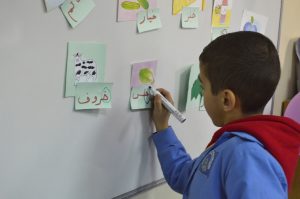
When UDL was first developed, it was for students with disabilities and gifted students. When it was actually implemented it in the classroom, we found out that all the students benefited from it because we’re all different learners. You might be a visual learner; I might be an auditory learner. We grasp information in different ways.
There is no one way to learn.
UDL trains teachers to go into a classroom with the mindset that every single one of their students learns differently. It removes barriers to education because the teachers are equipped with the tools and strategies to reach all types of learners before they start teaching.
A UDL classroom itself is designed from the start to be inclusive because the curriculum is designed that way — students have different resources they can use to learn, teachers are equipped with teaching strategies to work with all students, and peers get to interact and learn from each other. So you’re creating a classroom environment that’s already prepped in the beginning. For example, a student who is non-verbal or has complex communication needs would have the appropriate resources to express themselves. These resources can include assistive technologies such as a tablet.
What are some of the strategies for different types of learning in UDL?
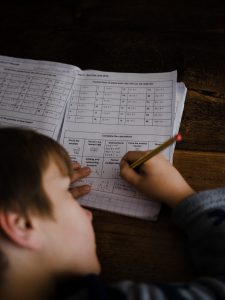
In math, for example, when students are solving the problem, oftentimes they think there’s only one way to solve a problem. But allowing students to explore different ways of solving problems is a way of incorporating different learning styles. This is referred to as multiple means of expression. Some students might want to use manipulatives. Some students might want to go straight to pencil and paper and diagram out the solution process. And other students might want to talk through the solution with their peers. But providing that kind of environment for students really helps.
We figure out ways that work best for us when we’re studying, right? Our teachers present us these strategies and then we gravitate toward things that work best for us. Acknowledging that and encouraging the student to learn that way is important. There is no one way to learn. We have to appreciate the diversity of learning in the classroom. So that’s really what UDL is about.
Why does World Learning embrace Universal Design for Learning?
We’ve started work on “inclusion,” and as we do more work on disability inclusion, I think it’s a great way to change the culture of teaching and learning. When you start designing curriculum, when you start designing lesson plans, and designing teacher training, starting with principles of UDL, you’re already creating that culture shift. You’re making the classroom a lot more inclusive and you’re ensuring that you’re meeting every different type of learner in the classroom and that every child is succeeding.
What are the other elements of World Learning’s approach to disability-inclusive education?
A lot of it is raising community awareness. We definitely need to improve the quality of instruction in the classroom so that all students are included, but also it’s important to raise the awareness at the community level, to ensure that parents understand that if they do send their kid to a school that they will get a good quality education. They won’t be left behind or drop out.
When students grow up in diverse classrooms and see that all students do not learn information the same way — and that’s okay — it really changes your perspective on the world.
It’s also raising awareness in communities and supporting parents so that their children with disabilities can stay at home, grow up in the community they were born in, and attend the local school.In many countries, we see children being sent awayto “boarding schools” because the local school or community thinks they cannot support the child. There’s no reason to isolate children that way. Let them live with their family, community, and peers.
How can World Learning use the principles of UDL in its global education projects?
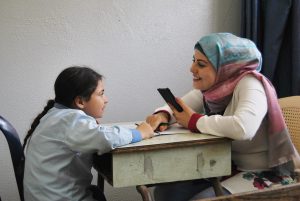
In QITABI 2, for example, we have an opportunity to incorporate UDL principles from the start of the project — everything from teacher training to teaching and learning materials. Considering that Lebanon is a post-conflict country, many students may be coming into the classroom with emotional and behavioral disabilities. For these students, classrooms need to be safe environments and material should be presented in multiple ways and many times for students to best process it. These are strategies that can incorporated in the teacher training programs.
So what are the long-term benefits of investing in disability-inclusive education now?
One of the most important things about creating inclusive classrooms from the very beginning is that the students our projects are targeting are going to be working together 25 years from now. If someone who is blind, or has dyslexia, or is a visual learner as opposed to an auditory learner joins our office, because of the experience of going to school with all our peers, we will be able to better work with different kinds of people.
I think when students grow up in diverse classrooms and see that all students do not learn information the same way — and that’s okay — it really changes your perspective on the world. We can be in a much more inclusive world, and we can live and work together. We can appreciate everyone as contributing to society.

